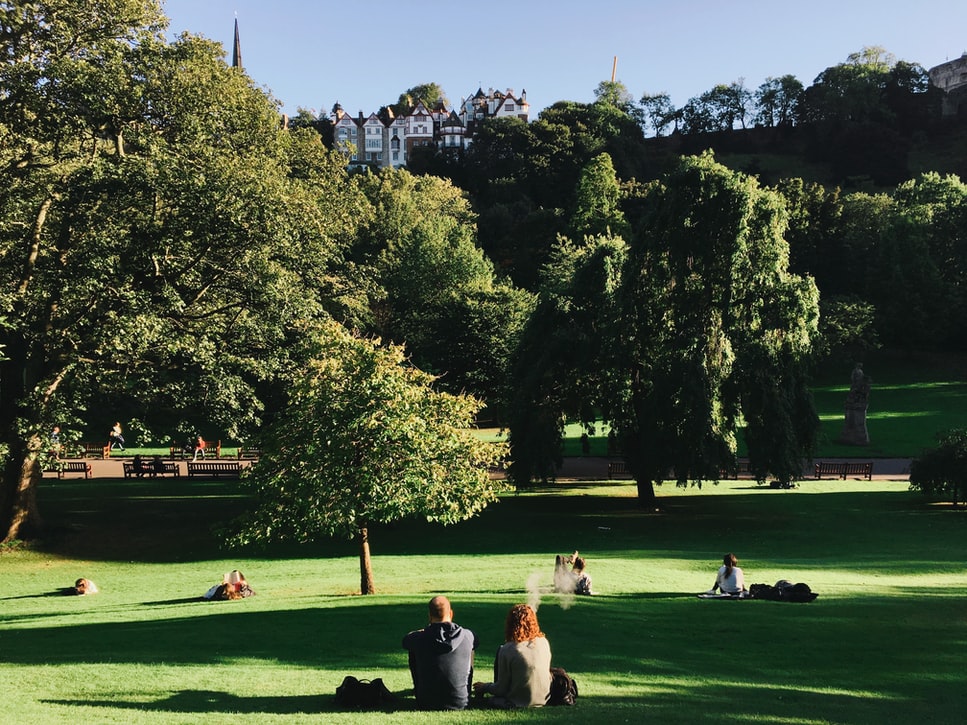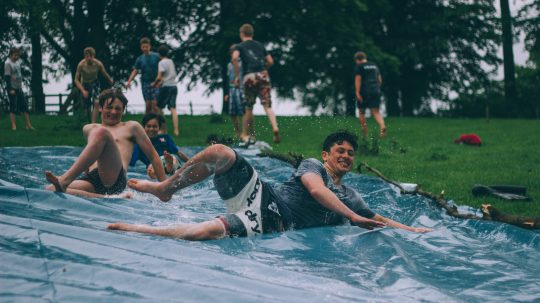As lockdowns have limited our freedom of movement to our local neighbourhoods, Khadija Kothia reflects on how our local communities can embody our rights.
In the past year, our lives have changed radically. What we initially imagined would be a two-week quarantine has turned into a year of lockdowns. In changing our daily routines, new habits have formed, and new spatial arrangements have been imagined.
Gone are claustrophobic daily rush-hour commutes into London’s glass-ceilinged heart from the slower suburbs I felt ‘accomplished’ enough to leave. Ironically, one year on, lackadaisical strolls around my local neighbourhood are a reality I have come to appreciate.
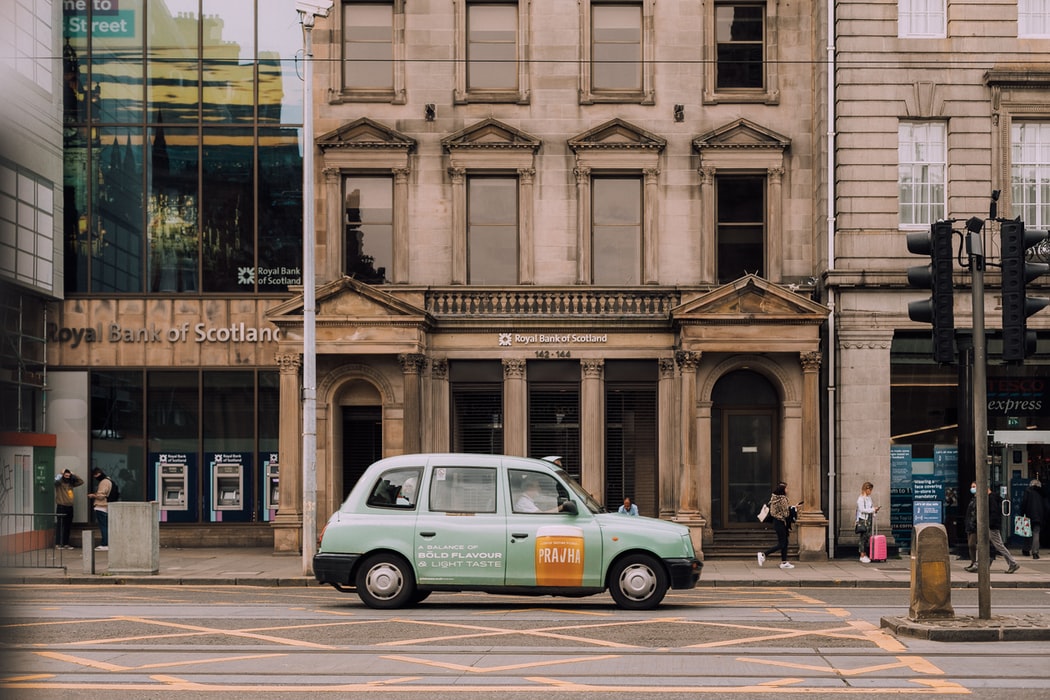
Ghostly city streets in lockdown. Pictured: Edinburgh, 29 March 2021 (Credit: Humphrey Muleba)
I now often walk past my local library in the afternoon; the darkened glass between the vividly green window frames reflecting memories of the last time I visited, when I wasn’t old enough to go alone. On other days, I cut through the local park, which used to be so quiet that the wind echoed, but now buzzes with crowds of picnicking families and step-counters. Life now feels unmistakably more local, and yet, as I walk through the streets surrounding me, I am suddenly aware of the possibilities that this ‘new normal’ has created, and the human rights that can be fought for much closer to home.
During a recent editorial meeting with the EachOther team, I realised that my appreciation of the local isn’t unique. Chief Executive Andy Hull said he’d been “enjoying gardening with his toddler in land revitalised by the local council” and Creative Director Sarah Wishart was enjoying “the view of Scotland’s mountains during her morning runs on top of Queen’s Park”. In Head’s Nook, Interim Editor Ella Braidwood was enjoying the “handwritten local history notes left on the village noticeboard” and “fairy doors placed under trees by local children.” Film Assistant Rhys Norman said he enjoyed “smaller parks where he regained a sense of community by chatting to other socially distant strangers out walking”. Our new Editor Dhruva Balram felt the same, spending his lockdown “exploring the history around his local area”, such as a pirate-hanging noose, as well as relishing the variety of handmade goods from the stalls set up by locals along the canals. From new biking groups to increased outdoor activities, the lockdown has encouraged many of us to see the potential that staying local provides.

Head Nook’s local residents selling homemade jam during lockdown (Credit: Ella Braidwood)
Yet, unbeknownst to many of us, human rights are embodied in many of the services our public spaces provide. The recent Clapham Common vigil to remember Sarah Everard spotlighted the right to assembly and the emotional necessity of mobilising in open spaces. The right to information was amplified by the need to stay informed with local Covid-19 case rates through local newspapers. Local libraries provide a free, shared workspace and the right to education underlies the provision of free books. Open parks and wide sidewalks are protected through the right to movement, though are not always provided.
Since the government implemented austerity measures in 2010, Britain has closed almost 800 libraries and 763 youth centres, many of which provided a safety net for struggling children and families.
Lesser-known human rights are also important in the provision of public space. These include the right to culture and art, the right to rest and holiday and the right to social service, all of which, when provided, can create a collective sense of connectivity and refuge in shared communities. Perhaps what is most striking about these rights is that they are not particularly extraordinary. They are simply the basic tenets for creating healthier, more sustainable lives. They embody the essence of our universal rights “close to home”, in the “the world of the individual person; the neighbourhood he lives in; the school or college he attends; the factory, farm or office where he works”, as human rights champion Eleanor Roosevelt once observed. As she concluded, “unless these rights have meaning there, they have little meaning anywhere.”
However, for many years now, local communities across Britain have felt the strain of local funding cuts and government austerity measures. Since the government implemented austerity measures in 2010, Britain has closed almost 800 libraries and 763 youth centres, many of which provided a safety net for struggling children and families. In 2019, council leaders warned that one in five councils may have to impose drastic spending controls to avoid bankruptcy.
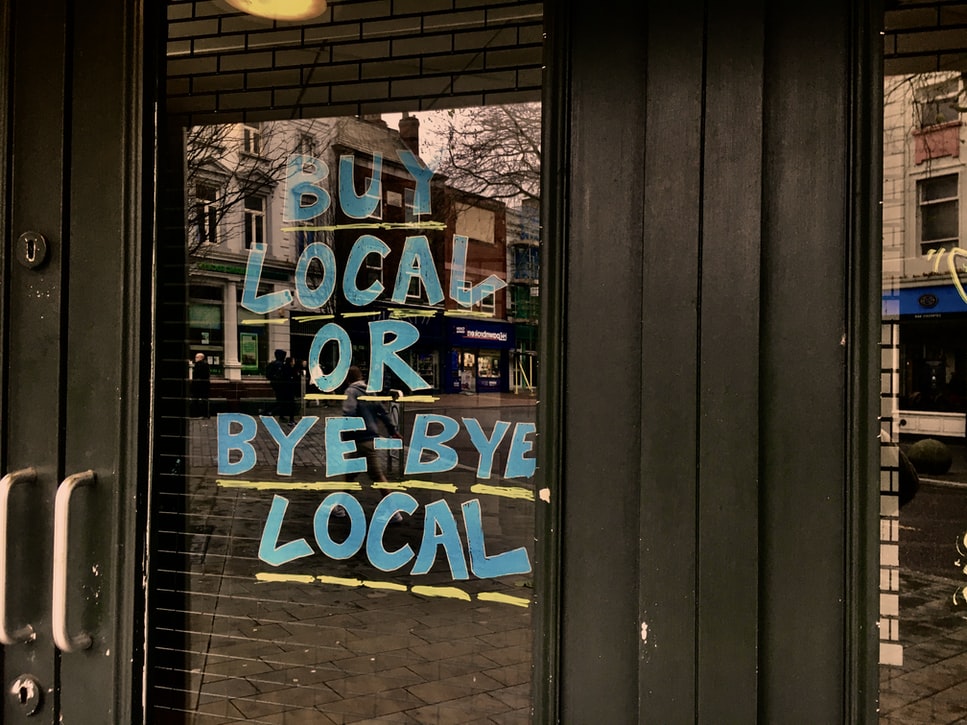
(Credit: Unsplash/Arthur Franklin)
In 2019, prime minister Boris Johnson implied that the country could only afford libraries after economic recovery. However, the government’s seeming disregard for the public realm in recovery plans is, in my view, a misguided approach. Investment in public space can improve mental health, education and skills access, in turn creating conditions for economic growth.
Increased privatisation and corporate profit motives risk rendering public interests an afterthought, and the government’s reliance on a consumer-led economic recovery from Covid-19 will only push public spending further down the priority list. In the government’s recent budget announcement, which aimed to set the terms for debate on finance between now and the next general election, public spending choices paid little heed to local considerations. Of the emergency £750m coronavirus fund set aside for charities, only £34m was directed to local children and youth charities, and the government’s £500m youth investment fund confirmed in the Conservative manifesto in December 2019 has yet to be spent.
For young parents, libraries are integral for expanding their children’s educational resources and community centres are primary spaces for intercultural dialogue and exchange for the elderly and newly-arrived migrants.
Furthermore, boosts in home-working productivity during lockdown will inevitably change the nature of post-pandemic working conditions. In one survey, 88% of workers across Europe expected remote working to form a greater part of a more hybrid form of future work. This number jumped to 95% for tech workers when asked about working two to five days from home. Home-working has meant lower commuting exhaustion, more flexibility and greater use of the local outdoors. As companies prepare plans for hybrid working, a post-pandemic future will see an increased amount of daily activity shift from corporate hubs to local neighbourhoods, and public spaces such as local parks and libraries will become a greater part of daily shared working environments.
Some communities are often ignored in discussions such as these. Lockdown may have positively forced me back into my local neighbourhood, but for many, these environments were already their everyday realities. For young parents, libraries are integral for expanding their children’s educational resources and community centres are primary spaces for intercultural dialogue and exchange for the elderly and newly-arrived migrants. Outdoor parks provide spaces for shared family experiences and outdoor play, and public halls host community discussions. In a political environment where corporate growth takes centre stage, non-consumerist activities can become invisible to the state. Yet, the lockdown has revealed the criticality of the everyday institutions at the heart of local life.
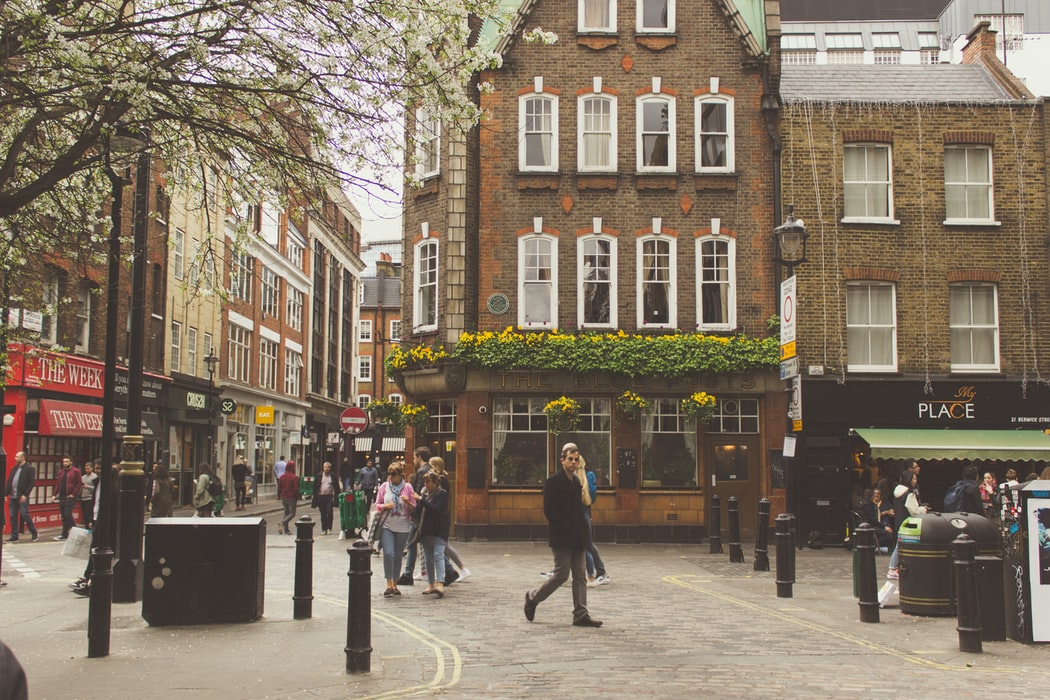
Local street activity has become a central part of daily life during lockdowns (Credit: Unsplash/Alexandru Silitra)
In a few months, the world will begin to open back up. Governments and large corporations may romanticise the 9-5 days of old, when the mental sustainability of commuting for two hours a day went unquestioned. Yet, this strange but historic period has unexpectedly created a watershed moment in our understanding of daily life and finally stretched our imaginations towards envisioning a healthier, happier way to live.
Perhaps, I may now force myself to stay at home some days, take a walk to my local library and make the most of its shared work-space. On my way home, I may take the long route through my local park and pick up a local newspaper to check the latest activities listed at my community centre. There are fewer public spaces left now, but the past year has shown that that the possibilities at a local level are many and that public spaces can symbolise local resistance against global market forces and a space to begin to reassert our human rights.

